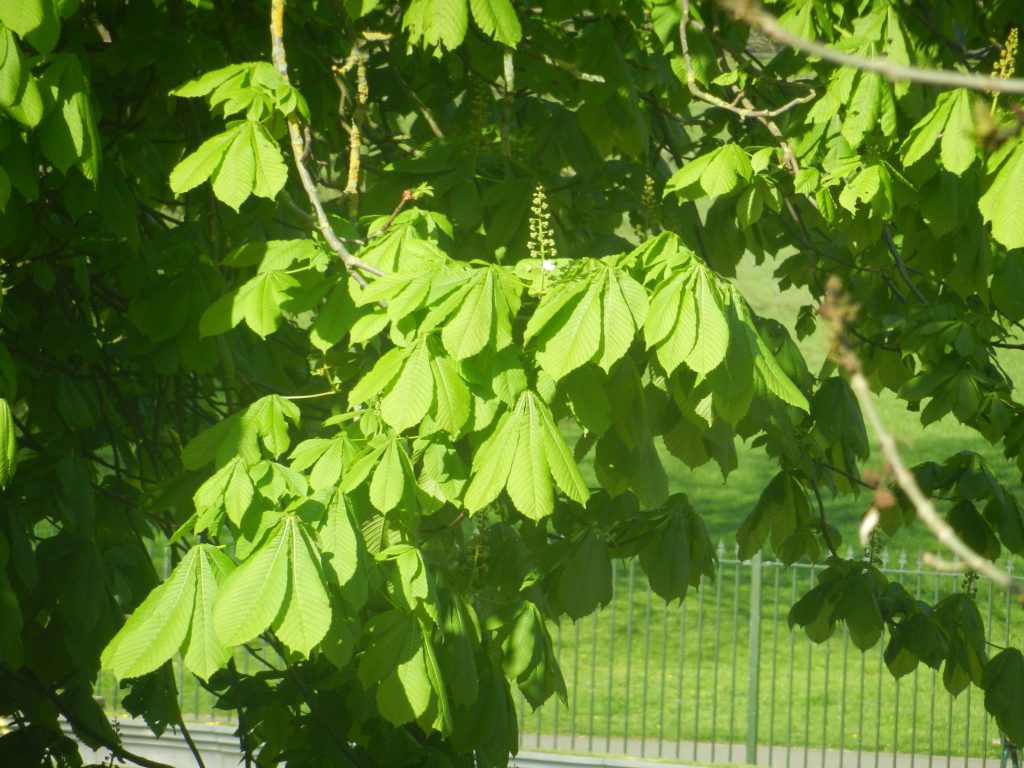
The horse chestnut shown in yesterday’s photo has progressed from closed buds to full leaf in three weeks, despite the weather! The pinnacles of flowers (see centre) are much more prominent than the flowers on many other species of tree, although at the moment the flower-heads are being battered by a cold north wind, so if the flowers are lost before pollination there will not be many ‘conkers’ in the autumn. The groups of leaves are, in fact, leaflets as the five all spring from the same point on the leaf stalk. Horse chestnut trees produce quite a dense canopy of leaves so that in woodland of this species not much can grow on the woodland floor as there is not sufficient sunlight. However, certainly in municipal parks the horse chestnut is the preferred species for avenues and single row planting, in the case of Pearson Park around the edge.
The name horse chestnut has an unclear origin ( like the monkey puzzle for example). In some places tree leaves and small twigs are fed to horses to bulk-up winter fodder and in the summer the horses will graze lower branches if other feed is in short supply. The word chestnut is also a bit odd. The horse chestnut and the sweet chestnut are, apparently, not related and have different latin nomenclatures.
Unlike the laurel (s.p.p.) the leaves of the horse chestnut decompose readily.
In the winter the horse chestnut is recognisable by its domed crown (shape of the whole tree against the sky), grey-brown bark, being lofty and by the fat leaf-buds being set opposite on the twigs.
(to be continued).